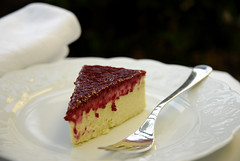 This week I had guests from abroad and decided to serve them a Brazilian dish called “farofa”. A lot of Brazilian dishes are inherited from the colonizers (the Portuguese) and from the African slaves. We also have an international cuisine that came with the immigrants (from Italy, Japan, Germany, etc). But I’m found of foods that are ultimately Brazilian and have indigenous ingredients, like our “farofa”! I’m very curious about the indigenous culture and care about its preservation. Maybe there’s something genetic about it, since I’m probably related to the famous Villas Boas brothers.
This week I had guests from abroad and decided to serve them a Brazilian dish called “farofa”. A lot of Brazilian dishes are inherited from the colonizers (the Portuguese) and from the African slaves. We also have an international cuisine that came with the immigrants (from Italy, Japan, Germany, etc). But I’m found of foods that are ultimately Brazilian and have indigenous ingredients, like our “farofa”! I’m very curious about the indigenous culture and care about its preservation. Maybe there’s something genetic about it, since I’m probably related to the famous Villas Boas brothers. In 1943 the Villas Boas brothers led the expedition known as ‘Brazil’s march to the West’, which was intended to explore the interior of the country for colonization. They discovered the Xingu indigenous tribes in the middle of the jungle and were overwhelmed by them cultural richness. The expedition left but the brothers stayed to protect the indians from the land speculators, diamond prospectors, skin hunters, and rubber gatherers who had followed in their wake. In1961 they succeeded in getting the entire upper Xingu legally protected. Xingu is Brazil's most successful Indian reservation, a 10,800-square-mile sprawl of pristine rainforest, in the state of Mato Grosso, where 14 Indian tribes live. But today, the park is surrounded by fields and pasture in the center of Brazil's fastest developing agricultural region, and the Indians, whose numbers have nearly doubled to about 5,000 since 1961, say they are feeling the pressure. The indian population in Brazil decreased by more than 90% since the country’s discovery and with that a big part of our nature, and the destructive progress is still going on.(For more info check this out: Disinherited).
So, at least let spread the word and get people interested in their culture through culinary curiosities. Like in this case, where my guests really appreciated my “farofa” recipe and were happy to learn more about it. I told them that this dish could only exist because the Brazilian Indians knew how to use the bitter variety manioc, which is poisonous when raw, detoxifying it and transforming it into flour, the basic ingredient of “farofa”. That was learned, then spread out, by the Portuguese when they came to Brazil and found out that the weather was unsuitable for several crops they were use to eat so they were forced to develop new eating habits based on the food that was availiable in the country and used by the Indians.
Today manioc is widely used in every region of Brazil, as much as the most popular dish made with it: Farofa. There are many different recipes of it, depending on family and region traditions. It’s a side dish that goes well with almost everything: meat, fish, pork, chicken and feijoada. At home I do this delicious and simple recipe to be served with roasted chicken and amuse foreigners!

Farofa(Serves 4)
Ingredients:
3 tablespoon of butter
1 small onion, sliced
1 egg
1 cup toasted manioc flour (you can also toast the uncooked flour in the pan, low heat, stirring constantly until slightly golden)
1 tablespoons fresh parsley, minced
2 tablespoons olives, sliced (I prefer green, but sometimes I use black)
salt and pepper to taste
Sauté onion in butter until soft, but not browned. Reduce heat and add egg, stirring until scrambled and well mixed. Gradually add manioc flour, mix to incorporate. Stir in olives and parsley. Season to taste and serve.





2 comments:
I love hearing the stories behind foods from difernet cultures. I haven't seen manioc before, but I going to look so I can make my own farofa!
I actually have manioc flour I purchased for a carriean style recipe I never made. This looks fabulous, and what a history you have there in your family! Thanks for sharing the recipe, it looks deliscious, can't wait to try it! If anyone else is looking for manioc flour, try looking for "yucca flour" as it is sometimes labeled.
Post a Comment